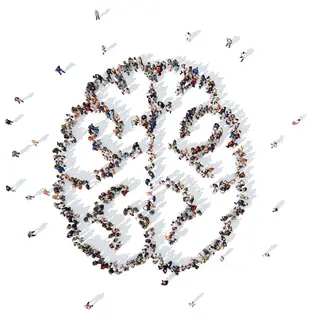Credit: Mediamodifier from Pixabay
Behavioral Science
MIT Sloan study shows credit cards act to “step on the gas” to increase spending
Research presents first evidence of differences in brain activation based on payment method
CAMBRIDGE, Mass., March 11, 2021 – Research shows that people tend to spend more when using credit cards compared to cash. However, it is unclear whether credit cards act to “release the brakes” on spending or instead “step on the gas.” A recent study by MIT Sloan School of Management and University of Utah Prof. Sachin Banker presents the first evidence of differences in brain activation when using credit cards versus cash. They found that credit card purchases serve to “step on the gas,” driving more spending.
“Prior studies have shown that credit cards have a different effect on consumers than cash and are often blamed for overspending and household debt. But it is unclear from standard research tools whether credit cards ‘release the brakes’ by removing the pain of payment or ‘step on the gas’ by creating a craving to spend,” says Prelec.
Banker notes, “Billions of financial transactions each year involve cash and credit cards, so any neural differences in the ‘buy’ processes that drive decisions are multiplied to a high degree. By identifying how credit cards shape neural processes involved in making purchase decisions, we spotlight brain mechanisms that could be exploited by new payment methods as they evolve.”
In their study, which Banker worked on as a PhD student at MIT Sloan, the researchers used fMRI technology to look at the brain at the moment of purchase. Participants used their own personal credit card or cash to make real purchases of everyday products.
They found that credit cards serve to ‘step on the gas’ by putting costs out-of-mind regardless of the price of the product. More specifically, the study revealed that credit cards drive greater purchasing by sensitizing reward networks in the brain, involving the same dopaminergic reward center (the striatum) that is exploited by addictive drugs like cocaine and amphetamines.
“The reward networks in the brain that are activated by all kinds of rewards are activated by a credit card purchase,” says Prelec. “The act of putting that plastic credit card in your hand is associated with enjoyable purchases.”
The researchers did not find evidence supporting the theory that credit cards “release the brakes” on spending by reducing the pain of paying. Further, cash purchases did not activate the reward networks in the brain.
In addition, the findings suggest that not all credit cards trigger the same neural response. Prelec explains, “The card you use for restaurants and vacations creates a different appetite for spending than the card you use to buy gas for your card. We need to be aware of this, as technology is making it possible to pay with our phones, which can create different purchase cravings.”
Banker notes, “An important implication of this work is that it highlights how credit cards leverage neural reward mechanisms to facilitate greater spending. Hopefully, this research will help to encourage further work that takes new perspectives toward understanding how payment methods influence purchasing processes, particularly as people start to adopt new forms of payment.”
Prelec and Banker are coauthors of “Neural mechanisms of credit card spending,” which was published in Scientific Reports, a publication of Nature Research. Their coauthors include Derek Dunfield and Alex Huang of the MIT Sloan Neuroeconomics Laboratory.
The MIT Sloan School of Management
The MIT Sloan School of Management is where smart, independent leaders come together to solve problems, create new organizations, and improve the world. Learn more at mitsloan.mit.edu.



